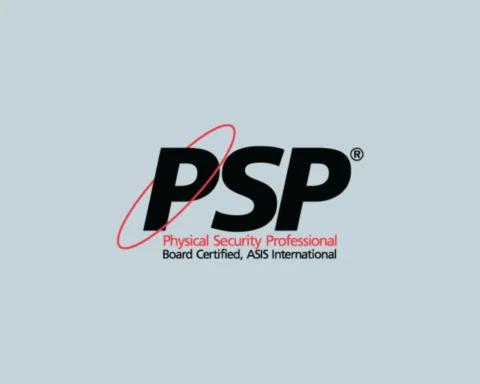About Author:
 |
Mr. Md Yousef Alsulaiman is a VMA and pursuing CVS qualification. He is Project Manager with over 18 years of extensive experience in leading complex airport projects for prestigious organizations, including Dammam Airports Company and the General Authority of Civil Aviation in KSA. His proven track record includes the successful management of a portfolio of multi-million SAR projects, guiding them from initial conception to flawless execution, consistently meeting deadlines, adhering to budgets, and surpassing rigorous quality standards. He has certifications in project management, engineering, sustainability and many other relevant areas. |
Abstract:
We are running through VUCA business processes where Volatility, Uncertainties, Complexities and Ambiguity are the calls of the days. These are the results of falling trade barriers; fast-paced technological advances; declining communications and transport costs; international migration; and highly mobile investment. The main challenge firms facing are how to take advantage of new resources and markets while dealing with intense and growing global competition. This paper addresses how Value Methodology (VM) can help in achieving an edge over competitors.
In today’s market, Value Methodology is important improvement tool. Application of VM resulted in typically by 15 to 25 percent reduction of manufacturing cost, investment cost, customer warranty cost, and procurement costs. However, Value Methodology is not immune to Globalisation and increasing competitive pressures, technology upgradation or obsolescence one must innovate or die.
Introduction: –
To keep pace with intensifying global competition, business Organisations are always looking for new management techniques and best practices to enhance their product /service quality and profitability. But some times an old technique proves to be the best; one of such technique is Value Methodology. Value Methodology has emerged as highly effective and practical management techniques of the world. Value Methodology technique as a combination of Value Analysis and Value Engineering provides the edge. Value Analysis is used for the Existing Products or Services and Value Engineering applied for New Product or Service Development. Most successful Organisation of the world uses VM technique for continuous improvement of its product and service quality, market share, innovation and profitability during current years.
Value Methodology facilitates in enhancing customer value by reducing cost, making use of various improvement tools like Lean facilitates in enhancing customer value by reducing cost and improving delivery speed by eliminating non-value added activities (waste), and Six Sigma improves quality by reducing variations.
This paper explains how the VM technique is used for getting customer satisfaction by suggesting improvements in products or services.
The Integration Model
During the design stage of product / service, a significant amount of information is gathered and analysed in order to support the decision-making process that leads to successful products. Various techniques are used which help to collect, organize, analyse, synthesize, and display the information used in the design process. Quality Function Deployment (QFD), Value Analysis / Value Engineering (VE), 8D Analysis, 5W 2H analysis, Failure Mode Effect Analysis (FMEA) and Design for Manufacture and Assembly (DFMA) are among these techniques. Each one of them represents a formal methodology aimed at accomplishing particular objectives.
Successful application of these tools needs an administrative system to ensure proper deployment of it. We have introduced these tools as part of a business philosophy that provides streamlined design procedures at low cost by providing offshore services. Typically, individuals (champions) within organizations are trained in the techniques and are responsible for implementing them.
Extensive training, multidisciplinary team collaboration, expert guidance and long work sessions are required for successful implementation. The lack of any of these elements, or an attitude of the champion are detrimental to collaboration, can significantly affect the effectiveness of these tools.
Experience shows that each tool presents particular strengths and weaknesses that make it suitable for specific applications.
Figure 1 presents the sequence in which QFD, VE and DFMA were applied to the different cases in this work. This sequence was established based on an analysis of the characteristics of each tool and experience in their application. The research tried to identify the gaps and overlaps in the information as the design stage proceeds through the different steps. A brief description of each one of the tools follows.
The Quality Function Deployment methodology is designed to drive a product development process from conception to manufacture. The House of Quality (HOQ) is a graphic tool that is closely associated with QFD and is used to display the outcome of the analysis at the design stage: the correlation between customer’s desires and engineering specifications of the product; the customer’s perception about the product with respect to competing products and the areas of opportunity for design.
Value Methodology is a process in which a product is analysed in terms of the functions it performs. Costs are associated with these functions, and disparity of value, in terms of the cost to importance of the functions are identified and targeted for improvement. Closely associated with this methodology is the Function Analysis System Technique (FAST) diagram, which displays the functional decomposition of the product. In this diagram,
Functions are classified as basic (what the product must do) and support functions. Function importance vs. Function cost graphs can be used to display disparity of value. Boothroyd and Dewhurt’s Design for Manufacture and Assembly methodology is a technique that focuses on product redesign for minimizing manufacturing and assembly costs. The technique provides a ranking system that allows comparison of competing designs in terms of their ease of assembly and the component’s manufacturing costs.
Procedure for Case Studies
The proposed methodology was applied in different degrees to five cases. In one of the case studies, only QFD and DFMA were applied. In three cases, only VE and DFMA were applied. All of the techniques were applied in the last case. Four of the cases involved subassemblies from industrial components, while the fifth one was a complete product.
Figure 2 summarizes the cases, goals and applied methodologies.
Multidisciplinary teams made up of 3-5 members were formed to analyse and recommend modifications. Teams were made up of part-time graduate students who work in industry.
Test cases were selected from a list of candidate products that were proposed by the team. All necessary information, including cost data, engineering information, and market conditions were made available by the companies that owned the products. All of these companies are transnationals, and their names have been omitted for obvious reasons.
As part of their competency development, teams were trained in the use of tools that are particular to each technique: House of Quality (QFD), Function Analysis System Technique (FAST) diagram and Disparity Charts (VE); and the DFMA [Boothroyd, Dewhurst, Knight, 1994] technique and software.
Training focused on the use of the tools that are part of each technique, as opposed to the philosophy of the methodology. Experienced instructors supervised each team’s work.
Throughout the project the following factors were monitored:
- team member attitudes towards the use of each tool;
- flow of the information generated and sorted through the process;
- results of the analysis at each step
Projects were conducted over a number of weeks period. Each team member worked approximately 40 hours per week in the project.
Analysis of the Cases
Case 1 originated from a proposal in the sales department. QFD was used to clarify and justify the analysis. The request was to facilitate easy assembly of system and avoid water leakage.
Management felt that such a feature would add a distinctive characteristic to the product and quickly approved the project. A modification that met the customer’s request was prepared and optimized using DFMA. A few prototypes were built and tested in the field.
The new design was well accepted by the users. No Customers complained about failure of product after modifications.
Customers Problems: the increase in cost, and a perceived lack of robustness of the new feature.
Case 2 was based on a project proposed by the engineering department and the purpose was to reduce costs. A QFD was not conducted. During the VM process the team had a very difficult time in trying to identify all of the functions of the subassembly, and serious discussions about the nature of the system were needed. The DFMA stage was very straightforward and potential modifications were quickly evaluated. In the end, the
Modifications proposed by the team passed the scrutiny from the designers and quality engineers. The team considered that the VM/DFMA process had allowed them to look at the proposal from all perspectives, and therefore all questions were addressed before the scrutiny from their peers. Furthermore, the team felt that it had full ownership and control of the proposal, and they were willing to push it through the revisions needed for implementation.
Cases 3 and 4 also originated in engineering, primarily with the purpose of reducing noise, reducing costs. The number of parts was reduced in each case, resulting in lower assembly and service costs. However, proposals were halted as manufacturing costs would increase due to the need to buy new tooling. Both products had been in the market for several years, and the costs of tooling are virtually zero at this stage of their life cycle.
Case 5 originated in a request by the service department. Customers and field users responded to a survey from which a design HOQ was prepared. The most frequent request was for increased reliability of the cooling system. The VE focused on this system and resulted in several proposals for a redesign. The solution that was chosen was optimized with DFMA. The solution did not address issues such as mean time between failures, because cost increased significantly. Instead, the new design increased the ability to identify failure once it occurred, and it significantly increased serviceability.
Findings about the Integration Method
The HOQ brings the perceptions of the client in terms that engineers can understand. The study showed that this was an element that was difficult to account for in other VE processes, as seen in Cases 2, 3 and 4. After the QFD stage in Cases 1 and 5, the task at hand seemed clear. The analysis could then focus on a specific component as opposed to the whole product. This is important given that the degree of difficulty grows as the number of elements under analysis increases.
Another outcome of the QFD process was that relevant information was readily available: requests were ranked in order of importance and measurable characteristics of product performance were correlated to the customer’s desires. This information allowed the initial step of the VE process, gathering of information, to be greatly simplified. In cases 2 through 4 this first step of VE proved to be an expensive task, mainly due to the lack of focus. In these cases, information was sought and displayed just in case it might be needed, and there was no particular procedure or format for organizing or displaying this information. The resulting VE processes tended to be somewhat erratic, tedious and confrontational. Design teams had no preconceived idea about what direction the proposals could take, and significant effort was required before teams could accomplish any degree of consensus.
The study also showed that the results of the QFD process were not necessarily balanced, because requests focused on improving performance of specific features which may be relevant to specific populations. Customers appear to make assumptions about the product that are not immediately evident from their requests. Tradeoffs beyond the scope of the requests displayed as well as cost issues were not properly displayed by this analysis. As evidenced by Case 1, customer’s requests shown by the QFD may have not been set in the proper context. In particular, cost and appearance of robustness were factors that were not properly accounted for. Solutions were designed and implemented without any further filtering and as a result, failed to meet the costumer’s expectations. It is clear that customers expected the product to perform their primary function. No credit is given if the product performs them, but the product losses all value when it doesn’t. Customers perceptions displayed in the HOQ focused in the manner in which complementing functions were performed. Case 5 showed that the VE methodology can be used as a filter for the results of QFD, because it forces all requests to be weighed against engineering and cost specifications, thus reducing the chances of failure.
VE is an engineering driven process, as shown in Cases 2, 3 and 4. During the construction of the FAST diagrams, basic functions were easily identified by each team.
On the other hand, support functions were not immediately obvious to the engineering staff, and as a consequence, the process of establishing the relative importance of the functions and isolating areas of opportunity was very demanding. In particular, the fact that support functions account for a high percentage of the cost appeared to cause concern among engineers and tended to bias their analysis towards reducing their role. As seen in Case 5, QFD helped provide data that could easily be characterized as support functions, with a ranking of importance that is clear to the engineer, thus reducing the VE effort.
One of the strengths of the VE process is that it triggers modifications that are not constrained by the product’s original architecture or composition, which is a more natural course of action in the QFD. Many of the modifications proposed by the VE process need significant study before implementation. This fact was particularly evident in Cases 2 through 4. The multiplicity of proposals requires that they be screened or validated. The DFMA process helped in performing this validation.
The DFMA methodology is straightforward, and the modifications that it recommends are very specific. In principle, the methodology is not constrained by the particular characteristics of the product, other than the obvious fact that the product needs to be an assembly. However, this methodology lacks of a systematic approach for validation of the recommendations, and it does not account specifically for the impact that the proposed modifications have on product performance. As seen in Case 1, indiscriminate application of DFMA resulted in a product that was optimized for manufacture and assembly, but which was oblivious to the fact that the very recommendations that the methodology made affected an important characteristic of the element (perceived robustness). Without the balance from the VE, this characteristic was missed. Our study showed that by combining DFMA with the results of the VE (Cases 2 through 5), the merits of the modifications proposed by the DFMA were easily evaluated. In those cases, DFMA functioned as an optimization tool, which seemed a better role for its capabilities. Furthermore, the modifications proposed by the DFMA were easily evaluated in terms of the information that was generated during the QFD/VE processes, thus providing a natural closure to the design exercise.
Conclusions
This Value Methodology (the integration of QFD, VE and DFMA) in a design process shows that:
- QFD is capable of identifying functions that need improvement in a given product.
- Relevant data about the product/function or component is immediately available for further processing in the VE stage.
- Information from the QFD makes the VE process more focused and manageable.
- Consensus regarding the identification of potential projects is reached more easily.
- VE allows for more solutions to be synthesized than the QFD alone. They are also more balanced.
- DFMA can be used to optimize the design proposals and the information from the QFD/VE processes can be used to evaluate the impact that the modifications suggested by the DFMA analysis may have on the product’s performance.
The case study shows that the methodology is better suited to products that are still in early stages of their life cycle. The life cycle value of the product was implicit in the procedure.
A benefit of the integrated methodology is the fact that after each step, the information is summarized, classified and displayed clearly. This allows the teams to have evidence of the project’s evolution. Communication is greatly enhanced and information flow is streamlined. The end of each stage allows for natural breaks in the process with few delays to bring team members up to date once the project is resumed.
Figure 1: Schematic representation of Value Methodology

Product Design Process









